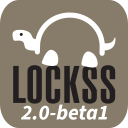3.2. Downloading the LOCKSS Installer#
Note
Commands in this section are run as the lockss user [1].
The next task is to download the LOCKSS Installer.
3.2.1. LOCKSS Installer Directory#
The directory into which the LOCKSS Installer is downloaded is simply known as the LOCKSS Installer Directory.
Many commands in this manual, such as those to install, configure, start and stop the LOCKSS system, are relative to the LOCKSS Installer Directory, meaning you need to navigate to it at the console before issuing the relevant command.
3.2.2. Default LOCKSS Installer Directory#
The default LOCKSS Installer Directory will be ${HOME}/lockss-installer (where ${HOME} refers to the lockss user's home directory, typically /home/lockss), unless you use the LOCKSS Downloader's --download-dir option to set a custom LOCKSS Installer Directory.
3.2.3. Running the LOCKSS Downloader#
To download the LOCKSS Installer, you will use Curl, Wget or HTTPie [2] to invoke the LOCKSS Downloader [3], whose default action is to download the LOCKSS Installer.
As the lockss user [1], run this Curl, Wget or HTTPie command [2]:
curl -sSfL https://lockss.org/downloader | sh -s -
http -qd https://lockss.org/downloader | sh -s -
wget -qO- https://lockss.org/downloader | sh -s -
This will download the LOCKSS Installer into the Default LOCKSS Installer Directory.
Tip
Footnotes
